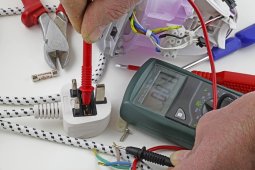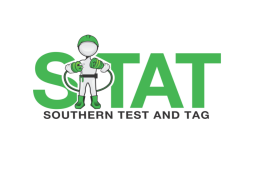
Can DIY Test and Tag really work? The simple answer is yes, however there are 3 essentials to success:
- Training
This is essential and needs to incorporate easily accessed on-going support. It is very interesting how so many new people have entered the training market claiming to provide training with full back up and support. They obviously know this is what people want; so they state that they provide it – simple marketing really isn’t it! This statement, however, needs further examination to find out who will be providing the training and importantly the on-going support available.
It is easy to say, ‘training run by an expert, fully qualified’. We reckon teaching what you do works the best and therefore all our trainers and support people can do the job – many with years of hands on test and tagging experience. Nothing beats ‘real’ experience. We’re not marketing gurus, but when it comes to test and tag we’re the experts – second to none! This is because Metrotest is the only established nationwide testing company that is involved in all aspects of the industry. Next year is our 20th year!
When you need ‘technical how to’ support we’re here too. As I said before we do it and our ‘people’ not ‘person’ are available to help you. You won’t get ‘sorry they’re on holiday ring next week’. Good training and support are essential ingredients.
- Backup Plan
 People, including all our staff, get sick, go on holidays, leave to work elsewhere or just get too busy in their core job requirements and this needs to be considered when planning in-house test and tag. What happens if you get behind? You need to have a contingency plan. Metrotest can offer to our clients, who have our systems, a solution because we operate a nationwide test and tag company so we can seamlessly, in the right situation, ‘pick up the slack’, catch you up and then leave you to carry on. The only additional cost is our charge for testing. This program is called ‘Tandem Tag’ and has worked well for many of our clients.
People, including all our staff, get sick, go on holidays, leave to work elsewhere or just get too busy in their core job requirements and this needs to be considered when planning in-house test and tag. What happens if you get behind? You need to have a contingency plan. Metrotest can offer to our clients, who have our systems, a solution because we operate a nationwide test and tag company so we can seamlessly, in the right situation, ‘pick up the slack’, catch you up and then leave you to carry on. The only additional cost is our charge for testing. This program is called ‘Tandem Tag’ and has worked well for many of our clients.
- The Testing System
The last item you need, apart from the time, is the PAT Tester, or a ‘Pat testing System’. What you need here is going to depend on how much testing you need to do (and how frequently you need to be testing), along with the requirements of what you need to test. If you only want to test computers, then you would not be testing any 3-phase equipment and therefore do not need a PAT which will do this. One size does not fit all and believe it or not small and portable, when put in a pelican style case, can become big and heavy very quickly! If you are only testing a couple of hundred items per year the ‘tag printing’ option is not a biggy, but if you are into the thousand or so, then it is likely essential and probably an overall cheaper option. If the capex does not allow for a printing option, then split the system and purchase the printing side later. Obviously to do this you will need a compatible tester.
The most advanced system (and mid-priced) on the market today is our MetroIPAT and this is the system we use ourselves everywhere.
At first sight it may seem big – but it is actually a much smaller, lighter system than for example the Metrel Delta PAT which when in its case with printer and everything is bigger and heavier! The MetroIPAT can test single and 3 phase items and has many advantages including double tagging and multiple coloured different sized tags, you can even make up your own test codes for non-electrical equipment eg ladders and have a tough tag printed out to put on them. These are abilities that you will not find on any other PAT testing system.
The real advantage to the MetroIPAT system is the time saved, so you are less likely to need our ‘tandem tag’ service. It can also test the protective earth at up to 25,000 milliamps where as most of its competitors can only test at 200 milliamps. The ‘pushy salesman’ may tell you that this is not necessary – if you are not convinced that this is what you should be buying then read our Blog ‘Just Compliant or Really Safe’ – we all want a life jacket that saves our lives!
A new system coming to the market that is small and unique in many ways is the METRO EasiPAT 10, and it has ‘real safety testing’ and can use a small printer so the whole system is very compact and entry level pricing.
Summing up, you need real training and support, a back up plan for when you get behind and lastly the right test equipment (PAT system). I think and always tell people to do one of our training courses first; then choose the test equipment after comparing options. So often people do the opposite and end up with a dud tester or system which just makes life hard and often does not even test properly!
The last thing I’ll say about DIY or in-house test and tag is that it encourages/gets the staff buying in to electrical safety. They take ownership of electrical safety and become much more aware of the dangers surrounding electricity and the use of electrical appliances; which is obviously a good thing.

 Metrotest have proven to be, not only a professional and reliable company over the last 4 years we have used them, the team there are friendly, outgoing and go the extra mile to ensure our business is operating at full capacity at all times.
Metrotest have proven to be, not only a professional and reliable company over the last 4 years we have used them, the team there are friendly, outgoing and go the extra mile to ensure our business is operating at full capacity at all times.



